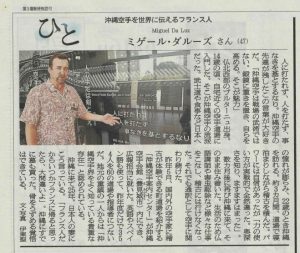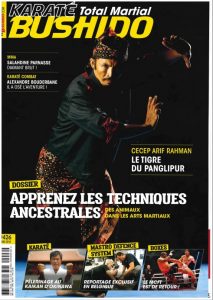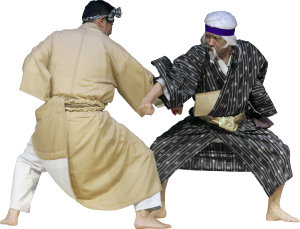Journalist Yanagihara Shigeo introduces Okinawa traditional karate from various points of view in a series of article.
1. The essence of Okinawa karate
2. Organizations spreading to the world
3. Karate master: Shinzato Katsuhiko
4. Karate master: Hokama Tetsuhiro
5. Karate popularization meritorious person: Itosu Ankō
6. Karate popularization meritorious person: Funakoshi Gichin
7. The way to the establishment of the "Karate Day"
8. Types of Karate: Sport · Martial Art · Health
9. Origin and Styles of karate: Shurite, Tomarite and Nahate
10. Leading figures who supported the Okinawa karate world after WWII
Introduction of styles should begin soon, with many masters to be introduced. Although in Japanese, using an online translating software might be a good way to read through this interesting series.
Toward registering Okinawa Traditional Karate as a UNESCO Intangible Cultural Heritage
Date and time: June 22 (Friday) 7 pm (doors open at 6: 30 pm)
Venue: Ryukyu Shimpo Hall (1-10-3 Izumizaki, Naha City)
Organizer: Okinawa Dentō Karatedō Shinkōkai (ODKS)
Co-organizer: Ryukyu Shimpo
- Keynote lecture (40 minutes)
Speaker: Inamine Keiichi (Former Okinawa Prefecture Governor) - Part-2: Panel Discussion (40 minutes)
Panelists:
Mr. Higaonna Morio (Okinawa Prefecture Designated Intangible Cultural Asset Holder)
Mr. Kiyūna Chōkō (Director of the board of directors of ODKS)
Mr. Dana Masayuki (Curator of the Okinawa Prefectural Museum & Art Museum)
Mr. Kadekaru Takao (Director, Culture, Tourism and Sports Division, Okinawa Prefecture Government)
- Part-3: Question response (5 minutes)
Admission is free. However, admission tickets are necessary. Tickets are available at the "Okinawa Karate Information Center" located inside the Okinawa Karate Kaikan.
Inquiries: Okinawa Dentō Karatedō Shinkōkai (098-851-3707)
In its June issue, the French martial arts magazine "KARATE BUSHIDO" has published a special feature article titled "The roots of karate". The article and photos are by Stephane Coutteel.
The Okinawa Karate Kaikan, the 1st Okinawa Karate International Tournament, the Okinawa qualifying preliminaries and our center are among others introduced.
Also included in the article are pictures and a mini interview of Taira Yoshitaka sensei, head of the World Matsubayashi-ryū Karatedō Association.
For those interested, a copy is available at our information center.
The report of the actual coverage is here.
On May 24th, the Ryūkyū Shinpō Newspaper published a cultural column titled “Easy to understand Okinawan history ~ Interpreting social changes.” The author is Mr. Kurima Yasuo. Born in 1941 in Naha City, he is an Okinawa historian, agricultural scientist and emeritus professor at Okinawa International University.
In his article, the words “Bushi · Samurē · Shizoku” which are often used in the world of Okinawa karate are explained in an easy-to-understand manner. Therefore we take the liberty to reproduce a part of the article in Japanese and present a translation below.
According to Mr. Kurima, there is very little war in Okinawan history. Furthermore, Bushi (武士) do not appear. There existed Aji (按司) or chieftain. Some people believe that these were Bushi, but Aji were not Bushi. Bushi appears in Japanese history but do not in Chinese and Korean history. In Okinawa also exist the words “Bushi (ぶし)”, “Samurē (サムレー)” and “Shizoku (士族)”. Still, there were no Bushi (武士) in Okinawa.
The Okinawan word “Bushi”
In Okinawa, the word “Bushi (ぶし)” itself has a different meaning. It means “a strong man.”
In the “Okinawa language dictionary” edited by the National Institute of Japanese Language Research, it is written “Tatsujin – expert. Person who excels in Bugei or karate, a person with great power”, and is supplemented with "alteration from Bushi (武士)”.
While linguistically duplicating the word “Bushi” of Japan, it has not the same meaning. It is used “providentially” (changing the meaning).
Looking only at the words, the Bushi (武士) of Japanese history is different from the “Bushi (ぶし)” of Okinawa.
“Samurē”
With early modern times appeared “Shi (士)”. This kanji should not be read “Shi” but “Samurē”. This is based on Higaonna Kanjun’s “The class system of the former Ryūkyū” (1909) and “The history of the Ryūkyū" (1957). While this word relates to the Japanese word “Samurai”, one shouldn’t confuse it with Bushi (武士).
In Japanese history, before the appearance of Bushi, there were people who were said to be “Saburau” (from the verbs “to serve” 候ふ/侍ふ). They “served” under emperor and aristocrats; that is, people “watching over and awaiting alongside with stillness". Some also had martial/military power. They were military officers (武官). Along the way, this led to “Bushi (武士) = Samurai (侍)”. However, since Okinawan “Samurē” were not armed, they differ from the previous ones. In the early modern times of the Ryūkyū, people who worked for the royal government (meaning civil servants) were called “Samurē”.
Shizoku appeared from the Meiji era
With modern times appeared “Shizoku (士族)”. This was used for the first time as one of the “Zokushō - family names” after the Meiji Restoration. Within Zokushō were “Kazoku – nobility”, “Shizoku – person with samurai ancestors” and “Heimin – commoner.” The former Bushi status people were regarded as “Shizoku”. To add more, times changing, those who were no longer Bushi became “Shizoku”. And Ryūkyūan “Shi (Samurē)” also became considered as “Shizoku”. Without pointing out this, using the term “Shizoku” is a source of misunderstanding.



